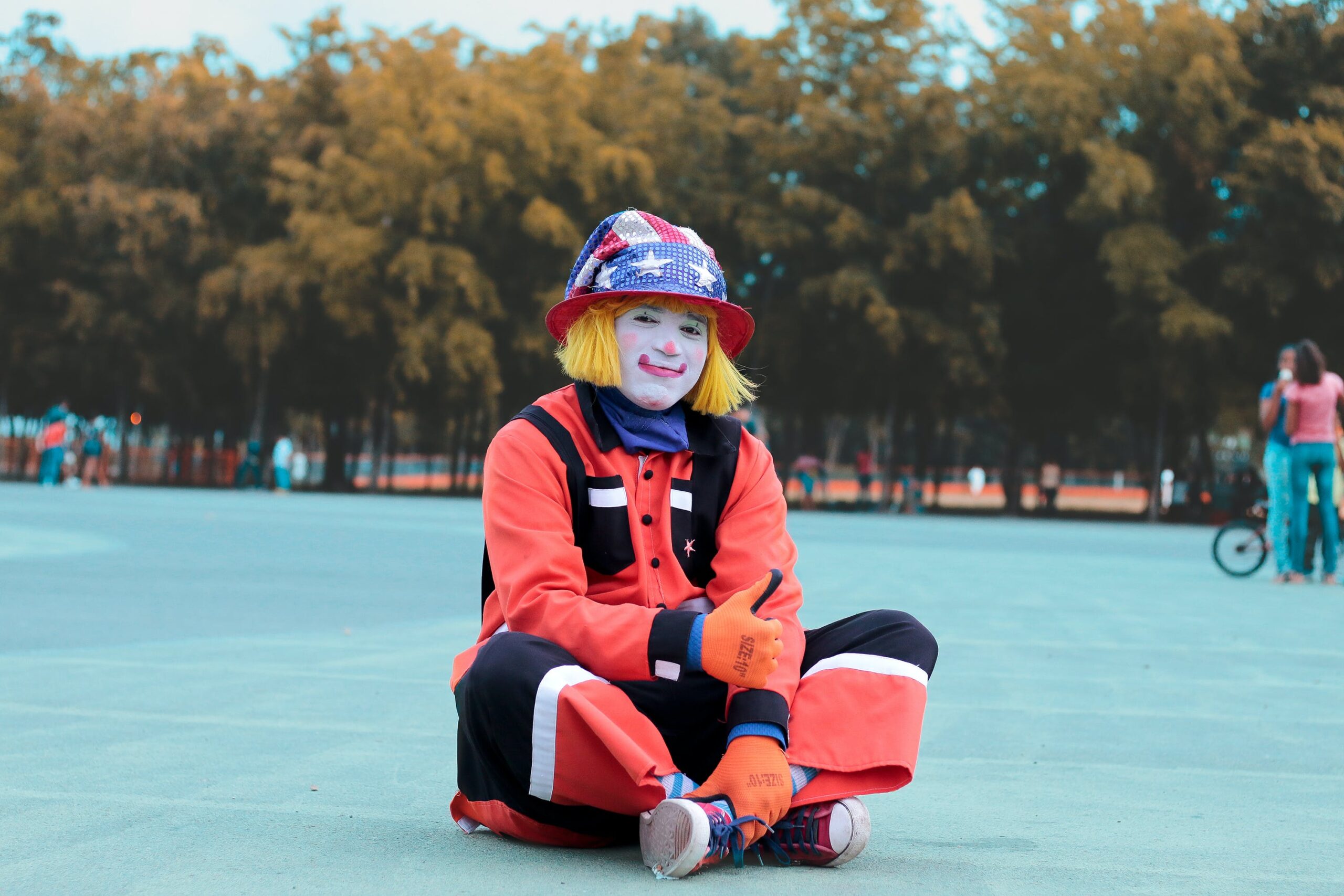Introduction to Clown Makeup: A Carnival of Colors:
Clown makeup is an iconic and integral aspect of the vibrant world of circus performances, children’s entertainment, and theatrical productions. It’s a fascinating blend of creativity, skill, and tradition, where artists wield brushes like magic wands to transform faces into whimsical characters that evoke laughter and wonder. This article delves into the captivating art of clown makeup, exploring its history, techniques, and enduring appeal.
Table of Contents
The History Behind the Paint: Origins and Evolution:
The roots of clown makeup trace back centuries, intertwining with various cultural and theatrical traditions around the globe. Ancient civilizations such as the Egyptians and Greeks employed facial paint and masks in their performances, often to represent comedic or grotesque characters. However, it wasn’t until the emergence of the modern circus in the 18th century that clown makeup began to take its recognizable form.
Early clowns, such as Joseph Grimaldi, often used rudimentary makeup consisting of white face paint and exaggerated features to amplify their expressions under the dim lights of the circus tent. As the circus evolved and diversified, so did clown makeup, with different styles and techniques emerging to suit various performance genres and personal preferences.
The Palette of Possibilities: Elements of Clown Makeup:
Clown makeup is characterized by its bold colors, exaggerated features, and whimsical designs. While there’s no fixed template for clown makeup, certain elements are commonly used to achieve the desired effect:
- White Base: A stark white foundation serves as the canvas upon which the clown’s character is painted. This base not only provides a neutral backdrop but also enhances the visibility of colorful accents.
- Colorful Accents: From vibrant reds and yellows to electric blues and greens, the color palette of clown makeup knows no bounds. These hues are used to exaggerate facial features, create intricate designs, and evoke specific emotions or personalities.
- Exaggerated Features: Clowns often accentuate facial features such as the eyes, eyebrows, nose, and mouth to amplify expressions and convey character traits. This may involve oversized eyebrows, exaggerated smiles, or even prosthetic noses and chin extensions.
- Details and Accessories: The devil is in the details when it comes to clown makeup. Artists often incorporate intricate patterns, dots, swirls, and other embellishments to add depth and complexity to their designs. Additionally, accessories such as wigs, hats, and oversized shoes further enhance the clown’s appearance and persona.
Mastering the Art: Techniques and Tips for Clown Makeup Application:
While clown makeup may seem daunting to the uninitiated, mastering the art is a rewarding journey that combines practice, experimentation, and a touch of whimsy. Here are some techniques and tips to help aspiring clown makeup artists hone their craft:
- Preparation is Key: Begin with a clean, moisturized face to ensure smooth application and optimal adherence of makeup. Consider using a primer to prolong the longevity of your design.
- Invest in Quality Products: Opt for professional-grade, hypoallergenic makeup products specifically formulated for theatrical use. These products offer superior pigmentation, blendability, and longevity, ensuring your clown makeup stays flawless throughout your performance.
- Layering and Blending: Don’t be afraid to layer colors and textures to achieve depth and dimension in your design. Use a combination of brushes, sponges, and your fingertips to blend seamlessly and create smooth transitions between shades.
- Practice Facial Expressions: Clown makeup is designed to accentuate expressions and emotions. Practice making exaggerated facial expressions in front of a mirror to understand how your makeup enhances or alters your features.
- Embrace Creativity: There are no hard and fast rules when it comes to clown makeup. Allow your imagination to run wild and experiment with different colors, shapes, and styles to create a unique look that reflects your personality and performance style.
Conclusion: Painting Smiles, One Brushstroke at a Time:
Clown makeup is more than just face paint; it’s a timeless art form that brings joy, laughter, and wonder to audiences of all ages. Whether you’re a seasoned professional or an enthusiastic amateur, the world of clown makeup offers endless opportunities for creativity, self-expression, and theatrical magic. So, grab your brushes, unleash your inner clown, and paint the town with smiles, one brushstroke at a time.
